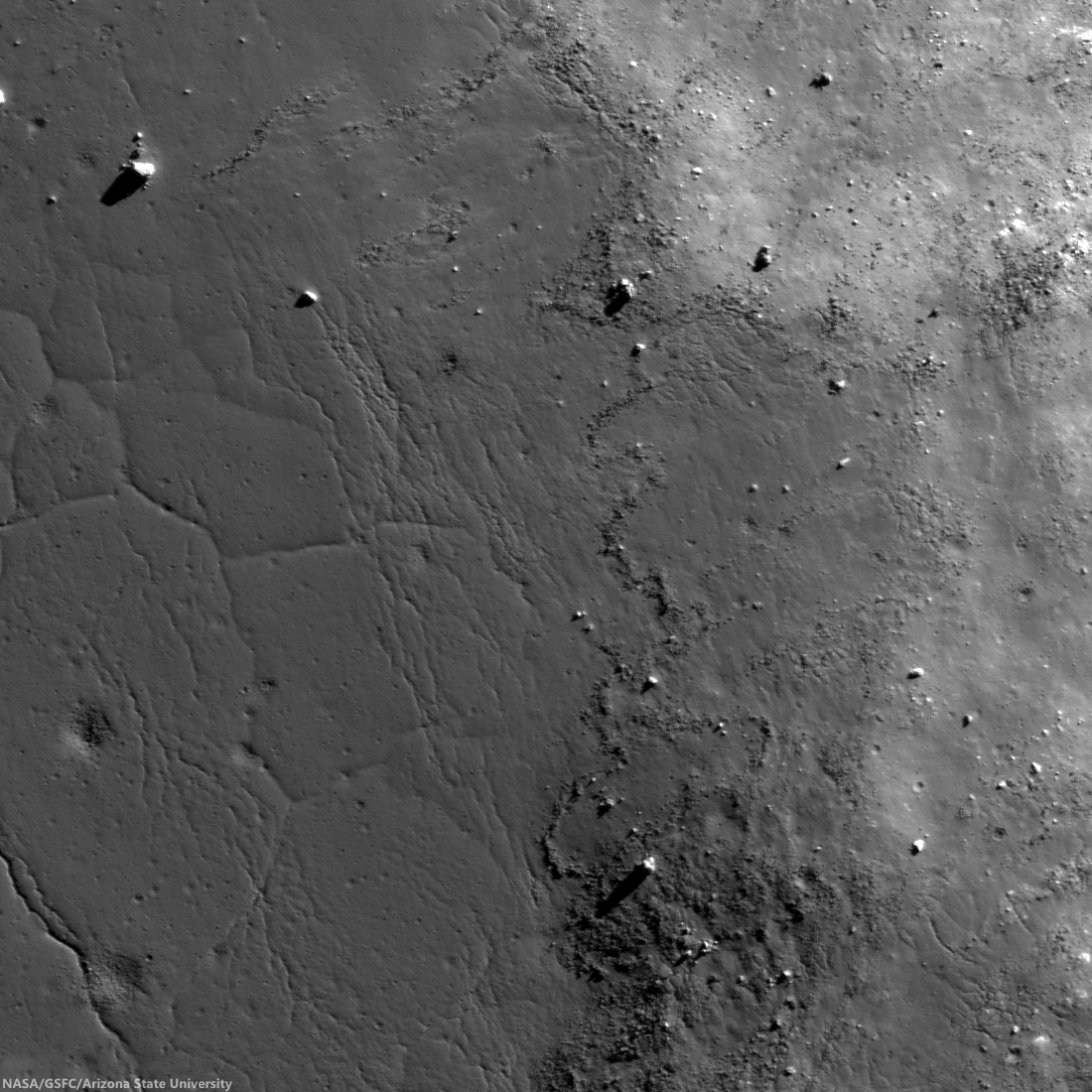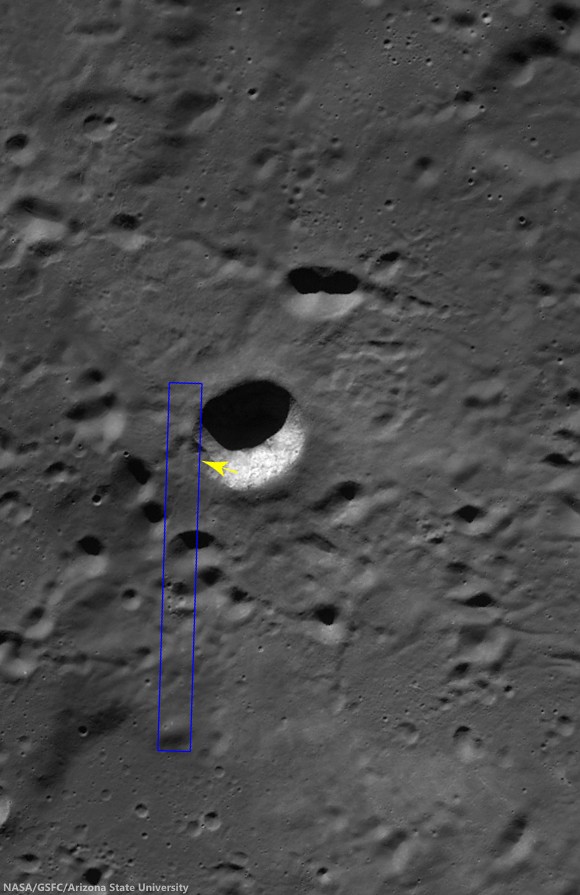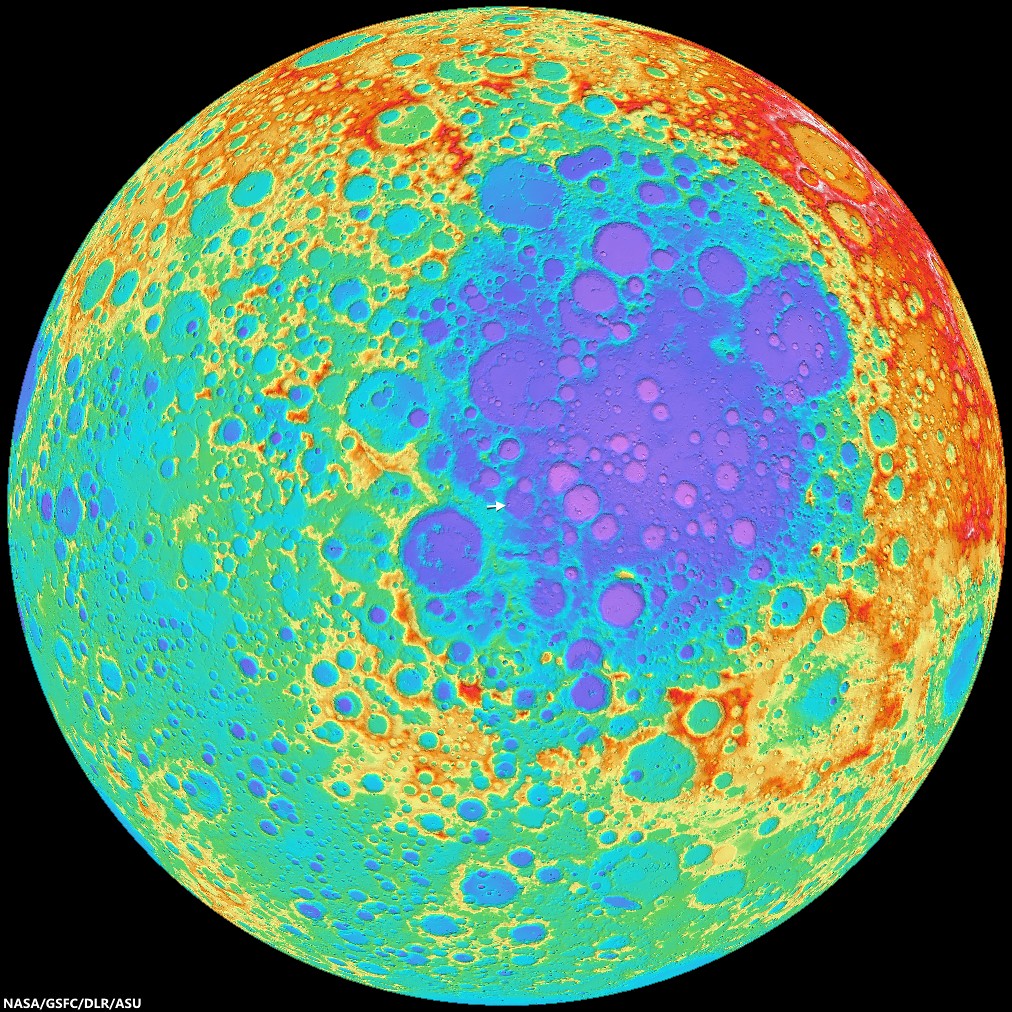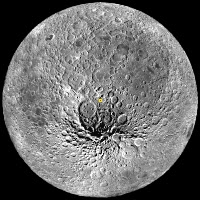 |
| Blocky fences, like debris on a beach marking high water, border impact melt pools on the rim of an unnamed fresh crater on the vast floor of the ancient South Pole-Aitken impact basin, in jumbled terrain between Antoniadi and Schrödinger basin. 816 meter-wide field of view from LROC NAC observation M112884286R, LRO orbit 1759, November 15, 2009; resolution 66 cm per pixel, far south illumination incidence angle 75.9° from 63.93 km. The long axis of the large boulder at upper right is approximately 120 meters in length [NASA/GSFC/Arizona State University]. |
Hiroyuki Sato
LROC News System
Today's Featured Image highlights striking forms on the outside rim of an unnamed young crater (~11 km in diameter; image center 71.425°S, 161.88°E; incidence angle is 75.9°) located 140 km east of Schrödinger basin.
The western flank of this small crater is dappled with multiple impact melt ponds (now solidified into rock) inhabiting local topographic depressions.
The surfaces of the ponds show polygonal patterns of fractures that likely formed as the melt cooled and solidified (and thus shrank). The organized pattern of boulders (looking somewhat fence like) formed along a flow front.
Since these lines of boulders rest on top of impact melt rocks they show that melt was splashed out at least two times during the crater forming event.
The later splashes barely made it out of the crater and flowed only a short distance. What caused this last splashing of melt? Perhaps a large landslide on the interior wall fell into a lake of melt at the bottom of the crater and caused a big splash.
Short melt flows are common around lunar craters -- they tell a tale of the incredible forces unleashed during cosmic collisions. These same events happen as often on the Earth as the Moon. But why do we see so few impact craters on the Earth? Earth has a lot of resurfacing (erosion, weathering, volcanism, plate tectonics), and weathering or resurfacing on the Moon is a lot slower. Thus, more craters and melt deposits are preserved on the Moon.
HERE.
Related Posts:
Tycho's flash-frozen inferno
Breached Levee
Splash Mark
Scalelike Impact Melts
Impact Melt Lobes
Herigonius K Impact Melt Flow
Waves
LROC News System
Today's Featured Image highlights striking forms on the outside rim of an unnamed young crater (~11 km in diameter; image center 71.425°S, 161.88°E; incidence angle is 75.9°) located 140 km east of Schrödinger basin.
The western flank of this small crater is dappled with multiple impact melt ponds (now solidified into rock) inhabiting local topographic depressions.
The surfaces of the ponds show polygonal patterns of fractures that likely formed as the melt cooled and solidified (and thus shrank). The organized pattern of boulders (looking somewhat fence like) formed along a flow front.
Since these lines of boulders rest on top of impact melt rocks they show that melt was splashed out at least two times during the crater forming event.
 |
| Context view of the unnamed 11 km-wide crater and vicinity. LROC WAC 100 meter monochrome mosaic, centered on 71.36°S, 162.91°E; field of view roughly 45 km. LROC NAC M112884286R footprint outlined in blue, location of the area of interest shown at high resolution, in LROC Featured Image released March 27, 2014 marked by arrow NASA/GSFC/Arizona State University]. |
Short melt flows are common around lunar craters -- they tell a tale of the incredible forces unleashed during cosmic collisions. These same events happen as often on the Earth as the Moon. But why do we see so few impact craters on the Earth? Earth has a lot of resurfacing (erosion, weathering, volcanism, plate tectonics), and weathering or resurfacing on the Moon is a lot slower. Thus, more craters and melt deposits are preserved on the Moon.
HERE.
Related Posts:
Tycho's flash-frozen inferno
Breached Levee
Splash Mark
Scalelike Impact Melts
Impact Melt Lobes
Herigonius K Impact Melt Flow
Waves
 |
| Situated between Antoniadi, home to a crater with the lowest elevation on the Moon, and Schrödinger basin, the fresh crater of interest is of an age and size (like similarly-sized and situated Shackleton) is generally more typical of mid-latitudes, a feature of the Moon's history of bombardment (and, thus, of the the Solar System) that's evidence of diminishing size and frequency of impacts over time, and more originating from the direction of the ecliptic. Exploration of the crater may afford an opportunity to sample deeper history. Hemispheric projection of LROC WAC-DTM topography centered on the area of interest [NASA/GSFC/DLR/ASU]. |



No comments:
Post a Comment